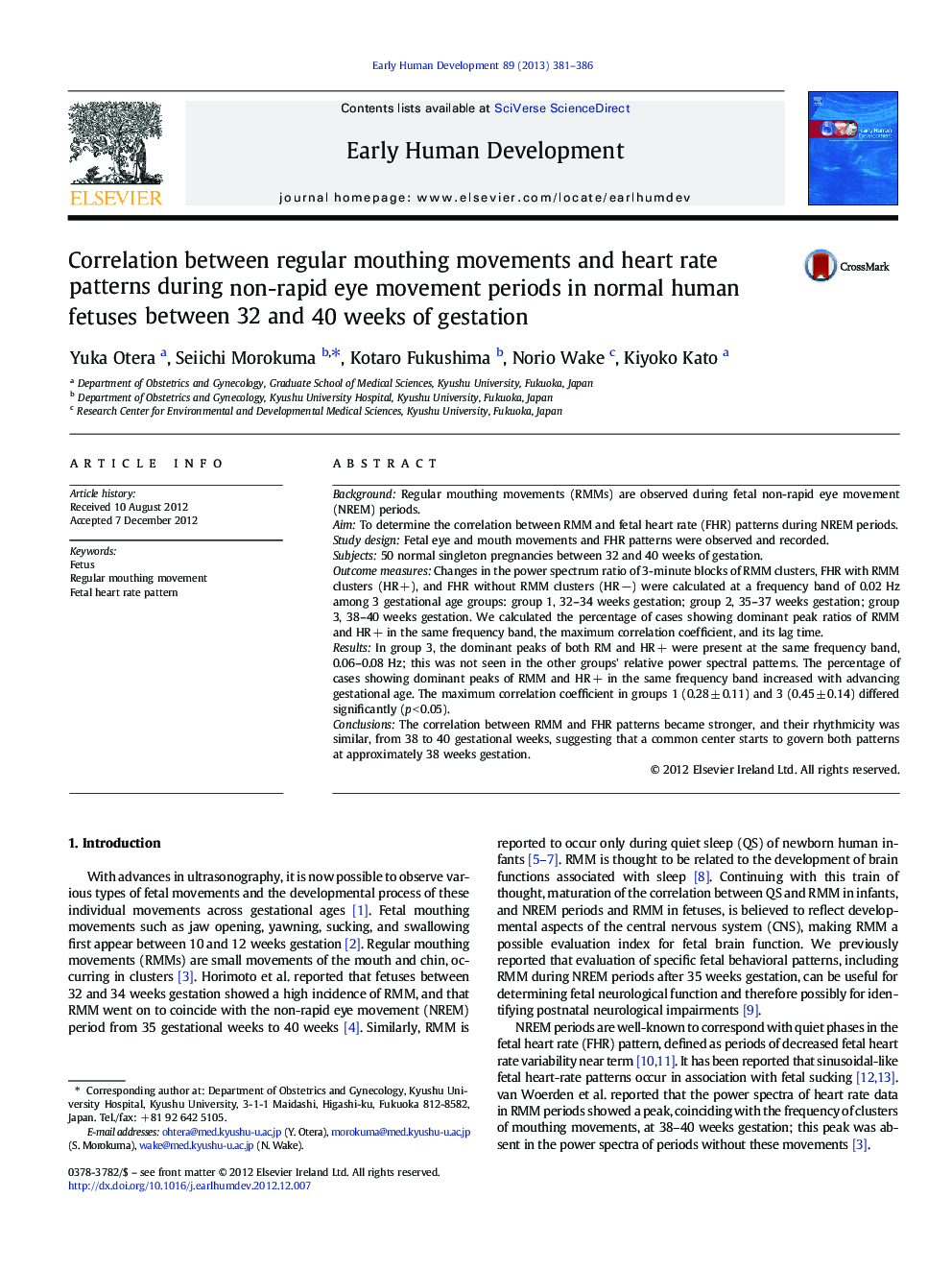| Article ID | Journal | Published Year | Pages | File Type |
|---|---|---|---|---|
| 3916683 | Early Human Development | 2013 | 6 Pages |
BackgroundRegular mouthing movements (RMMs) are observed during fetal non-rapid eye movement (NREM) periods.AimTo determine the correlation between RMM and fetal heart rate (FHR) patterns during NREM periods.Study designFetal eye and mouth movements and FHR patterns were observed and recorded.Subjects50 normal singleton pregnancies between 32 and 40 weeks of gestation.Outcome measuresChanges in the power spectrum ratio of 3-minute blocks of RMM clusters, FHR with RMM clusters (HR +), and FHR without RMM clusters (HR −) were calculated at a frequency band of 0.02 Hz among 3 gestational age groups: group 1, 32–34 weeks gestation; group 2, 35–37 weeks gestation; group 3, 38–40 weeks gestation. We calculated the percentage of cases showing dominant peak ratios of RMM and HR + in the same frequency band, the maximum correlation coefficient, and its lag time.ResultsIn group 3, the dominant peaks of both RM and HR + were present at the same frequency band, 0.06–0.08 Hz; this was not seen in the other groups' relative power spectral patterns. The percentage of cases showing dominant peaks of RMM and HR + in the same frequency band increased with advancing gestational age. The maximum correlation coefficient in groups 1 (0.28 ± 0.11) and 3 (0.45 ± 0.14) differed significantly (p < 0.05).ConclusionsThe correlation between RMM and FHR patterns became stronger, and their rhythmicity was similar, from 38 to 40 gestational weeks, suggesting that a common center starts to govern both patterns at approximately 38 weeks gestation.
